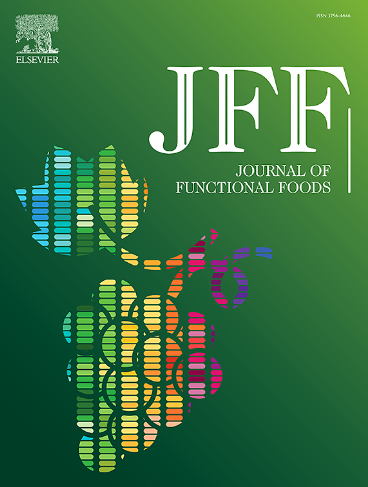红曲醋对炎症的调节作用:炎症成分测定及作用机制分析
IF 4
2区 农林科学
Q2 FOOD SCIENCE & TECHNOLOGY
引用次数: 0
摘要
红曲霉醋(MV)是一种典型的具有多种炎症调节成分的发酵食品,但其有效成分种类繁多,含量多变,阻碍了相关研究。鉴定其有效抗炎成分及其作用机制。通过转录组学、分子对接(单配体与多配体对接)和分子动力学模拟分析发现,乙酸和儿茶素是核心抗炎成分,肿瘤坏死因子受体1 (TNFR1)和肿瘤坏死因子-α (TNFα)是靶受体,乙酸和儿茶素通过作用于TNFα/TNFR1相互作用调节TNF和NF-κB信号通路。儿茶素的结合亲和力(−300 kJ/mol)高于乙酸(−590 kJ/mol),乙酸能有效促进tnfr1 -儿茶素的形成。此外,RAW264.7细胞实验表明,乙酸和儿茶素具有协同抑制炎症相关蛋白表达的能力。综上所述,该研究为开发天然功能醋预防炎症提供了更有价值的参考。本文章由计算机程序翻译,如有差异,请以英文原文为准。

Effects of Monascus vinegar on the inflammatory regulation: inflammatory ingredients determination and corresponding effects mechanism analysis
Monascus vinegar (MV) is a typical fermented food with multiple inflammatory regulation components, but the diversity species and variable content of effective compounds hinder the related study. To identify the effective anti-inflammatory ingredients and corresponding mechanism. Transcriptomics, molecular docking (monoligand and polyligand docking) and molecular dynamics simulation analysis were used to find acetic acid and catechin were the core anti-inflammatory ingredients, tumor necrosis factor receptor 1 (TNFR1) and tumor necrosis factor-α (TNFα) were the target receptors, acetic acid and catechin regulated TNF and NF-κB signaling pathways by acting on TNFα/TNFR1 interaction. Catechin has higher binding affinity (−300 kJ/mol) than acetic acid (−590 kJ/mol), while acetic acid effectively promoted TNFR1-catechin formation. Moreover, RAW264.7 cell assays demonstrated that acetic acid and catechin had the ability to synergically suppress the expression of inflammation-related proteins. Overall, the research provides more valuable references for developing natural functional vinegar to prevent inflammation.
求助全文
通过发布文献求助,成功后即可免费获取论文全文。
去求助
来源期刊

Journal of Functional Foods
FOOD SCIENCE & TECHNOLOGY-
CiteScore
9.60
自引率
1.80%
发文量
428
审稿时长
76 days
期刊介绍:
Journal of Functional Foods continues with the same aims and scope, editorial team, submission system and rigorous peer review. We give authors the possibility to publish their top-quality papers in a well-established leading journal in the food and nutrition fields. The Journal will keep its rigorous criteria to screen high impact research addressing relevant scientific topics and performed by sound methodologies.
The Journal of Functional Foods aims to bring together the results of fundamental and applied research into healthy foods and biologically active food ingredients.
The Journal is centered in the specific area at the boundaries among food technology, nutrition and health welcoming papers having a good interdisciplinary approach. The Journal will cover the fields of plant bioactives; dietary fibre, probiotics; functional lipids; bioactive peptides; vitamins, minerals and botanicals and other dietary supplements. Nutritional and technological aspects related to the development of functional foods and beverages are of core interest to the journal. Experimental works dealing with food digestion, bioavailability of food bioactives and on the mechanisms by which foods and their components are able to modulate physiological parameters connected with disease prevention are of particular interest as well as those dealing with personalized nutrition and nutritional needs in pathological subjects.
 求助内容:
求助内容: 应助结果提醒方式:
应助结果提醒方式:


